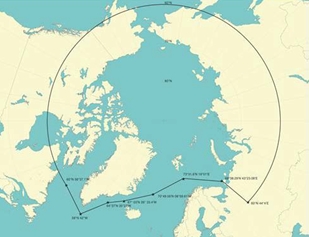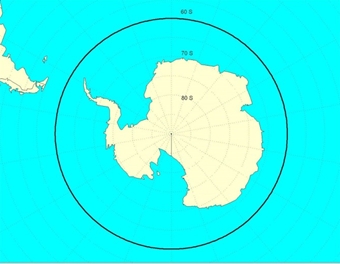The 94th session of the IMO Maritime Safety Committee (MSC94) was held at the headquarters of the IMO in London from 17 to 21 November 2014. A summary of the outcome is given hereunder for your information.
Please note that this summary has been made based on informal information obtained from participants of ClassNK and Working Papers distributed during MSC94 with priority given to disseminating the information as early as practicable.
1. Adopted mandatory requirements
Mandatory requirements were adopted at MSC94 as follows:
(1) Polar Code
Outline: To set the Polar Code for the ships operating in Arctic waters and Antarctic area, and to newly establish SOLAS chapter XIV to make the Polar Code mandatory. (See section 3 as below)
Applied to: ships keel laid on and after 1 January 2017
The ships constructed before 1 January 2017 shall meet the requirement by the first intermediate or renewal survey, whichever occurs first, after 1 January 2018.
(2) Portable atmosphere-testing instruments for enclosed spaces
Outline: To newly establish SOLAS XI-1/7 to require the carriage of portable atmosphere-testing instruments for enclosed spaces.
Applied: on and after 1 July 2016
(3) Verification of gross mass of containers
Outline: To amend SOLAS VI/2 to mandatorily require the shipper to provide the verified gross mass of a container to the captain and terminal representatives.
Applied: on and after 1 July 2016
2. Approved mandatory requirements
Mandatory requirements were approved at MSC94, which are expected to be considered for adoption at MSC95 (June 2015).
(1) The International Code of Safety for Ships using Gases or other Low flashpoint Fuels (IGF Code), and the amendments to SOLAS II-1 and II-2 to make the IGF Code mandatory. (See Section 4 as below)
(2) Amendments to SOLAS II-2/4 and II-2/11 to require P/V valves in each cargo tank as the secondary means of venting cargo tanks
(3) Amendments to SOLAS II-2/20 to accept the decreased number of air changes in ro-ro cargo spaces where an air quality control system is provided.
3. Polar Code
IMO has been discussing since 2009 to develop the Polar Code for the safety of ships operating in polar waters and protection of the environment of polar waters, in response to the proposal from Demark, Norway and Argentina, etc.
The Code consists of two parts: Safety Measures and Pollution Prevention Measures. Part 1 on Safety Measures (hull structures, stability, machinery, navigation and communication) and Part 2 on Pollution Prevention Measures were considered by each Committee. Further, the draft amendments to SOLAS and MARPOL have been under development to make the Code mandatory.
At this session, the Safety Measures of the Code and the draft amendments to SOLAS chapter XIV to make the Code mandatory were adopted, which had been approved at MSC93 in May 2014.
The Code will be applied to the ships keel laid on or after 1 January 2017. The ships constructed before 1 January 2017 shall meet the requirements by the first intermediate or renewal survey, whichever occurs first, on or after 1 January 2018.
Please see chart 1 for the areas the Polar Code will be applied to. For the composition and overview of the Polar Code, please refer to table 1.
The Safety Measures of the Polar Code, which was made mandatory by SOLAS chapter XIV, are applied to ships operating in polar waters certified in accordance with SOLAS chapter I.
The draft amendments to MARPOL regarding the pollution prevention and Part 2 of the Polar Code will be considered for adoption at MEPC68 (May 2015).
4 International Code of Safety for Ships using Gases or other Low flashpoint Fuels (IGF Code)
IMO has been discussing the International Code of Safety for Ships using Gases or other Low flashpoint Fuels (IGF Code) since 2010 based on “Interim Guidelines on Safety for Natural Gas-fuelled Engine Installations in Ships (Res. MSC. 285(86))”, developed in 2009. The requirements of the IGF Code were considered by each Sub-Committee. Further, draft amendments to SOLAS have been under development to make the Code mandatory.
At this session, the draft IGF Code and the draft amendments to SOLAS II-1 and II-2 to make the Code mandatory were basically approved for the formal approval and adoption at MSC95 in June 2015. If they are adopted at MSC95, the ships contracted on or after 1 January 2017 and the existing ships to be modified to use low flashpoint fuels will be required to meet the requirements of the IGF Code, at the earliest. The IGF Code, which will be adopted as the first step, sets the detailed requirements for the ships using natural gas as fuels. The further draft is scheduled to be developed by the Sub-Committee on Carriage of Cargoes and Containers to incorporate the requirements for the ships using methanol, ethanol and low flashpoint fuels.
5. Approval of guidelines etc.
The following unified interpretations (UIs) and guidelines were approved during MSC94. IACS UIs shown as below are available from our website (http://www.classnk.or.jp/hp/en/index.html) or that of IACS (http://www.iacs.org.uk/).
(1) Unified interpretations that a pressure indicator should be considered as “a visual or other device”, which is required for self-contained air breathing apparatus to alert the user before the volume of the air in the cylinder has been reduced to no less than 200 litter by the amended chapter 3 of the FSS Code adopted at MSC91.
(2) Unified interpretations that cargo spaces other than ro-ro spaces and container holds equipped with integrated reefer containers are considered to be “conventional cargo spaces” which need not be provided with means for automatically giving audible and visual warning of the release of fixed CO2 fire-extinguishing system. This is the same as IACS UI SC132.
(3) Unified interpretations on the control panel of sample extraction
smoke detection system located in the CO2 room was considered based on IACS UI SC260. UI SC260 interprets, if the CO2 system discharge pipes are used for sample extraction smoke detection system, the control panel can be located in the CO2 room provided that an indicating unit is located on the navigation bridge.
(4) Unified interpretations regarding additional fire testing criteria to assess the abrasion resistance and airtightness under a special circumstance where thin steel sleeves are used for “A” class pipe penetrations was considered based on IACS UI FTP6. Unlike UI FTP6, a gap gauge of 6mm thickness is to be used to check the penetration.
(5) Unified interpretations based on IACS UI SC213 to accept the case where stowage location of a remotely located liferaft required by SOLAS III/31.1.4, and the embarkation station are different. The interpretations specified in UI SC213 relating to the calculation of the length of the embarkation ladder were deleted, i.e. “The length of the embarkation ladder used to board this liferaft is calculated by applying and adverse list of 20 degrees, to the loading condition taken from the approved loading manual which gives the lightest draft at the embarkation station.”
(6) Unified interpretations to accept aft monitors of fixed deck foam systems to be located on fuel oil tanks, which is to amend MSC.1/Circ.1120.
(7) Unified interpretations related to the protection of the fire main isolation valves in tankers, which is to amend MSC.1/Circ.1456.
(8) Unified interpretations to take into account the adverse list of 15 degrees for a pilot ladder climbing more than 9 meters on a single ladder.
6. GBS (Goal-Based Standards for the design and construction of new ships)
GBS (Goal-Based Standards for the design and construction) of new ships for oil tankers and bulk carriers have been discussed since MSC78 in May 2004 and adopted at MSC87 in May 2010 along with the draft amendments to the conventions to implement GBS.
GBS is applied to ships contracted on or after 1 July 2016, while the detailed technical requirements are to be compliant with the rules of classification societies deemed by IMO as compliant with IMO GBS.
At the previous session (MSC93), IMO Secretariat reported that the application for GBS verification from 12 IACS Members, etc. had been received and that the audit process had started.
At this session, the progress of the audit process was reported by IMO Secretariat as follows:
(1) The audit teams to carry out the verification of IACS Common Package regarding IACS technical documents other than Harmonized
CSR started their works in March. The audits of the individual documents submitted by each IACS Member separately, including NK, were started in July.
(2) IACS submitted the common package regarding Harmonized CSR at the end of June in consultation with IMO Secretariat. The audit team in charge of the verification of the documents started the work in July.
The results of the audits by each audit team (five in total) will be integrated to be consistent, and a final report will be developed for the approval at MSC96 in 2016.
7. Safety standards for carriage of liquid hydrogen in bulk
Currently, a project is in the planning stage to produce hydrogen in Australia and transport the hydrogen in liquid to Japan. For the realization of the project, it is necessary to develop safety standards for the transportation of liquid hydrogen in bulk. In this regard, Japan and Australia have been discussing on this matter to set up the international safety standards as early as possible, and jointly proposed a new work programme to consider the establishment of the safety standards for the ships carrying liquid hydrogen in bulk.
At this session, the work programme was approved, where the development of the safety standards for the ships carrying liquid hydrogen in bulk would be started from CCC Sub-Committee in 2015 and completed by 2016.

Arctic Sea

Antarctic Sea
Chart 1: Areas to which Polar Code will be applied